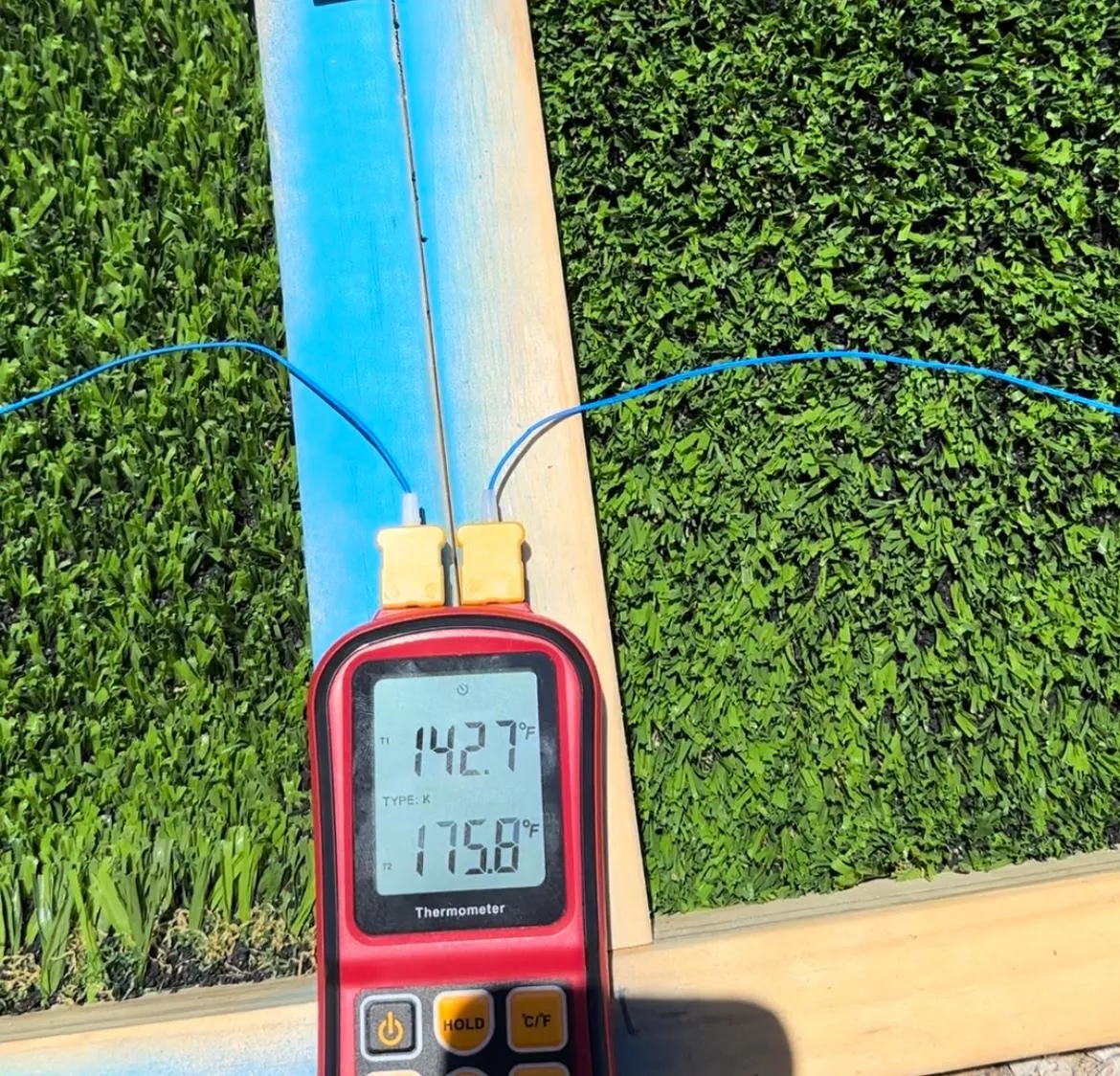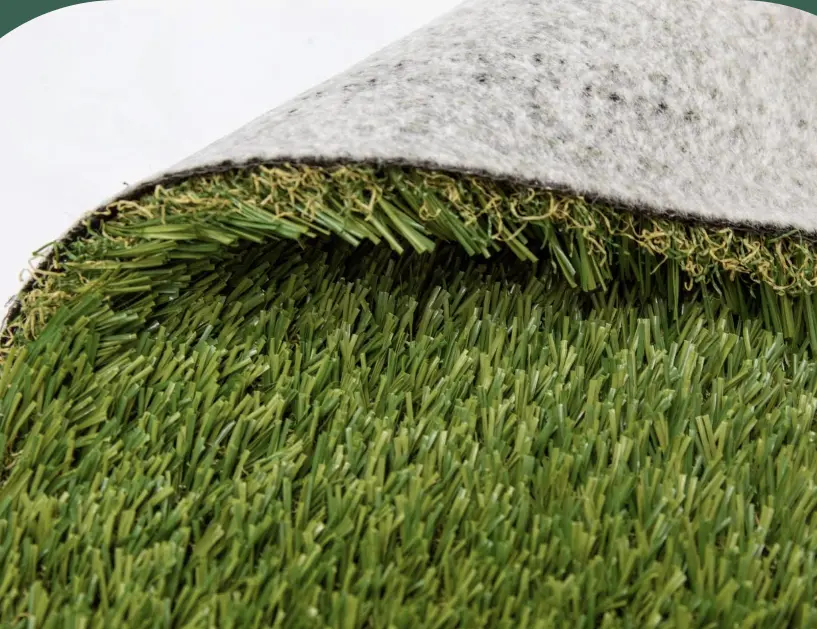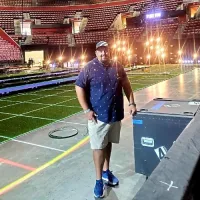972-764-8959
FREE ESTIMATES

blog
CONTACT
TURF TIMES

Why Artificial Grass for Playgrounds is a Game-Changer for Schools
Artificial grass is transforming playgrounds across schools, creating safer, greener, and more enjoyable play environments for children. This innovative solution not only enhances the aesthetic appeal of outdoor spaces but also provides practical benefits for students, teachers, and administrators alike. Let's delve into the multitude of reasons why artificial grass is becoming the go-to choice for schools.

The Importance of Safe Playgrounds
Playgrounds are essential for children's development, serving as spaces where they can engage in physical activity, socialize with peers, and develop important motor skills. However, safety in these environments is paramount. An unsafe playground can lead to injuries that could otherwise be avoided by implementing safety measures. Unfortunately, traditional grass and dirt areas can become muddy and uneven, posing risks of slips and falls.
Furthermore, maintaining a safe playground goes beyond just the equipment; the surface underfoot plays a critical role too. Artificial grass provides a consistently flat and resilient surface that is designed to absorb impact, reducing the risk of injuries during falls. This factor alone is a compelling reason for schools to consider the installation of synthetic turf in their play areas.
Access to safe play environments can affect children's willingness to engage in outdoor play. Schools that prioritize safety through the use of artificial grass not only foster a sense of security among children but also promote active lifestyles. After all, kids are more likely to play freely and explore when they know they’re safe, allowing them to fully enjoy their time on the playground.
What is Artificial Grass?
Artificial grass, also known as synthetic turf, is a man-made surface that mimics the look and feel of natural grass. It is typically composed of a blend of plastic fibers that are designed to withstand the elements, providing an appealing and durable alternative to natural grass. This innovative product has been used in various applications, from sports fields to residential lawns, but its introduction to playgrounds offers a host of unique benefits that are rapidly being recognized by educational institutions.
One of the main appeals of artificial grass is its adaptability. Unlike natural grass, which requires extensive care, such as mowing, watering, and fertilizing, synthetic turf is low-maintenance. This characteristic frees up valuable resources and time for schools, allowing them to focus on other critical areas instead of constant upkeep. With only occasional rinsing to remove dust and debris, artificial grass remains vibrant and inviting throughout the year.
Moreover, the technology behind artificial grass has advanced considerably. Today, it features drainage systems that prevent waterlogging, ensuring a dry and usable surface even after rain. Additionally, many types of synthetic grass are designed to be environmentally friendly, incorporating recycled materials and requiring no harmful pesticides. This combination of safety, aesthetics, and environmental consciousness makes artificial grass a compelling choice for school playgrounds.
Benefits of Artificial Grass for Playgrounds
One of the standout benefits of artificial grass for playgrounds is its ability to create a clean and sanitary play environment. Traditional playground surfaces can accumulate mud, weeds, and pesticides, posing health risks for children who frequently have direct contact with the ground. In contrast, synthetic turf is designed to limit bacterial growth and upholds higher hygiene standards. Schools can feel secure knowing their playgrounds provide a cleaner experience for children.
Another significant advantage is the flexibility and accessibility that artificial grass provides. Unlike natural grass, which can become damaged easily under heavy use, synthetic surfaces can handle high foot traffic without deteriorating. This durability ensures that children can play freely regardless of the frequency of use, which is particularly important in schools where multiple classes may share the same outdoor space.
Furthermore, artificial grass can boost inclusivity on playgrounds. For schools with children of different ages and abilities, a smooth, even surface allows everyone to partake in play activities without the uncertainty of uneven terrain. Additionally, the absence of mud and grass stains means a much tidier and stress-free experience for both children and their caregivers.
In addition to these logistical benefits, artificial grass offers aesthetic value that enhances the overall appeal of the playground. The vibrant green color and uniform appearance create a visually pleasing environment that invites children to engage in play. This appeal can even extend to the entire school community, promoting pride and increasing the desirability of the facility.
Cost-Effectiveness and Maintenance
When evaluating any long-term investment, schools must consider budget implications. While the initial cost of installing artificial grass may be higher than maintaining natural grass, the long-term savings are significant. The decrease in maintenance requirements translates to reduced costs in landscaping services and man-hours dedicated to upkeep, making artificial grass an economically sound choice.
Moreover, schools can save on water bills as artificial grass requires no irrigation, which is increasingly important in today’s climate-conscious world. During periods of drought or water restrictions, being able to maintain a lush green space without the need for additional resources can prove invaluable to school administrators and parents alike.
The longevity of artificial grass is another financial advantage. High-quality synthetic turf can last well over ten years, with warranties often extending to fifteen or more. This durability ensures that schools benefit from their investment over an extended period, and while periodic maintenance may be necessary, it is significantly less intensive than that required for natural grass.
Environmental Impact of Artificial Grass
One commonly held belief is that artificial grass is detrimental to the environment; however, this misconception tends to overlook the advancements in synthetic turf technology. Many modern artificial grass products are created using recycled materials, thereby reducing the reliance on virgin plastics and minimizing landfill waste. By promoting the use of sustainable materials, schools can contribute positively to environmental efforts.
Additionally, the reduced need for water, fertilizers, and pesticides when using artificial grass leads to a lower carbon footprint. Schools with natural grass often face challenges related to water conservation, and eliminating those high consumption needs makes a statement towards responsible resource usage. In practicing sustainability, educational institutions model environmentally friendly behaviors for their students.
Furthermore, cutting down on maintenance equipment, such as gas-powered mowers, aligns with environmentally friendly practices. Schools employing artificial grass minimize their air emissions and fossil fuel usage, making a significant impact towards reducing their overall environmental footprint.
Real-World Examples of Schools Using Artificial Grass
Across the country, many schools have embraced the benefits of artificial grass, transforming their playgrounds into safe, engaging, and visually appealing spaces. For instance, a school in California replaced its aging natural turf with synthetic grass and reported not only a decrease in maintenance costs but also an increase in student engagement during recess.
In another notable case, a southeastern school district found that implementing artificial grass in their play areas not only enhanced safety features but also reduced injuries amongst students. As a result, the district has encouraged even more schools to follow suit, establishing a trend that reflects a growing awareness of the advantages of synthetic turf.
These real-world examples demonstrate that artificial grass is not just a passing trend in playground design. It represents a shift towards a more conscientious approach to creating play environments that prioritize the well-being of students while also being environmentally responsible.
Addressing Common Misconceptions
As interest in artificial grass grows, so too do the misunderstandings surrounding its use. One frequent misconception is that artificial grass is too hot for children to play on during the summer months. However, advancements in turf technology have led to the development of products that feature heat-reducing properties, creating a more comfortable surface for children, even in sunny weather.
Another concern often raised is the environmental impact associated with synthetic products. As discussed previously, artificial grass can actually lead to positive environmental effects when made from recycled materials and by conserving resources like water. It’s important to gather accurate information and dispel these myths to make informed decisions about school playgrounds.
Perhaps one of the most significant misconceptions is that artificial grass lacks the natural aesthetic desired by many. In reality, modern artificial grass is crafted to closely resemble real grass in terms of color, texture, and even how it feels underfoot. This attention to detail ensures that playgrounds are inviting spaces that foster creativity and enjoyment for children.
Future Trends in Playground Design
The integration of artificial grass is merely the beginning of a broader trend toward innovative playground design that prioritizes both safety and environmental sustainability. As educational institutions increasingly recognize the advantages of artificial grass, we can expect to see more schools embracing this technology in various forms. This evolution isn't limited to just the surfaces but can extend to the entire landscape of playground equipment and structures.
Moreover, the concept of inclusive play is expected to take center stage. Designing playgrounds that cater to children of all abilities is becoming a priority for schools nationwide. The inclusion of artificial grass facilitates this goal by providing a safe and accessible surface that encourages participation, fostering a sense of community and belonging.
In addition to embracing inclusivity, we may also witness a rise in eco-friendly playground structures that complement artificial grass. Schools might explore materials such as recycled plastics and repurposed wood to create play equipment that aligns with the values of environmental responsibility. Overall, the future of playground design holds exciting possibilities, and artificial grass will undoubtedly play a key role in this transformation.
Embracing the Future of Playgrounds
In summary, artificial grass for playgrounds is revolutionizing the way our schools approach outdoor play. By providing a safer, more sustainable, and vibrant environment, it ensures that children have the best possible experience while playing and learning outdoors. As more schools recognize these advantages, we can expect to see a shift towards greener, more functional playgrounds that benefit our children for years to come.

